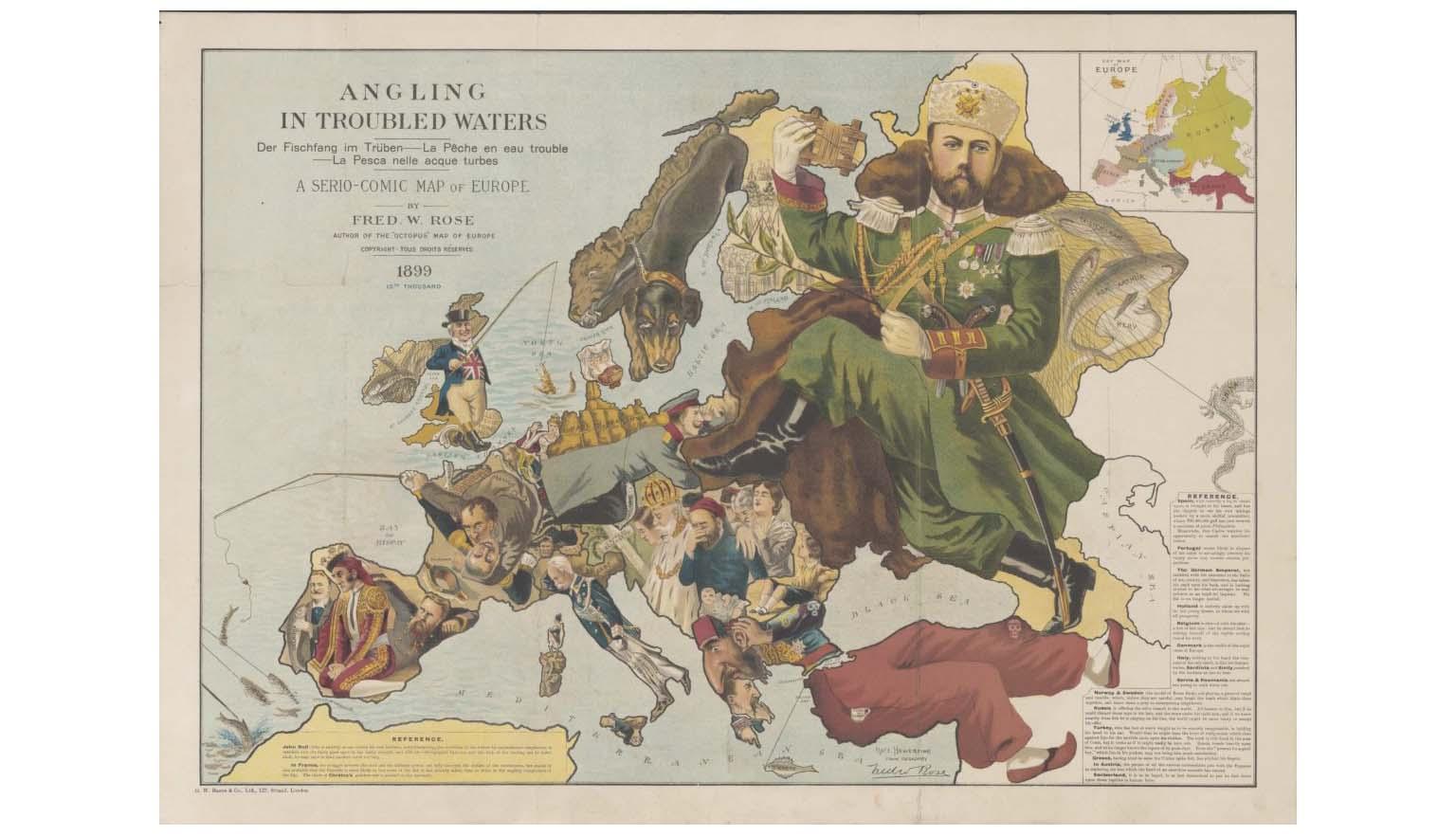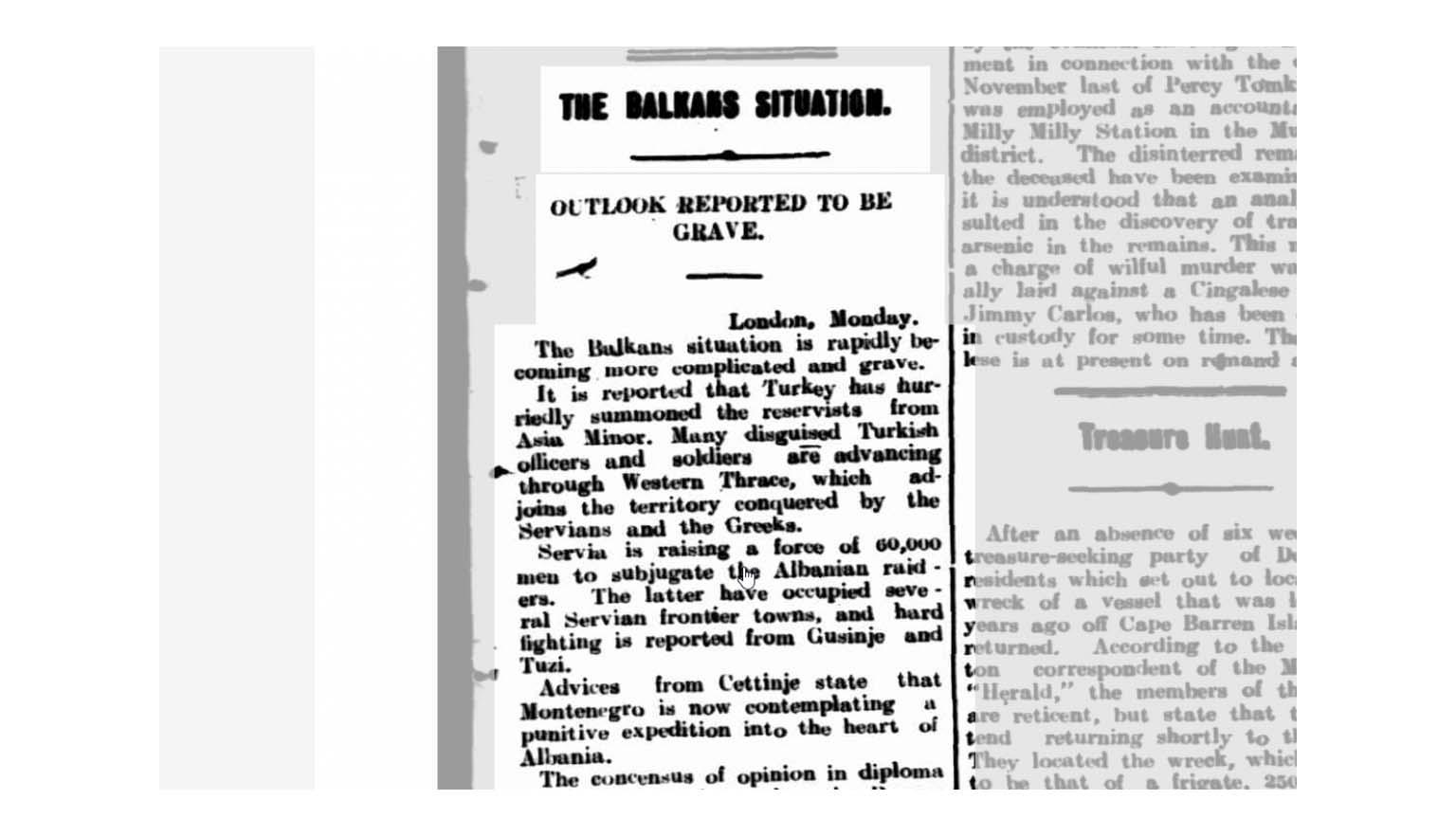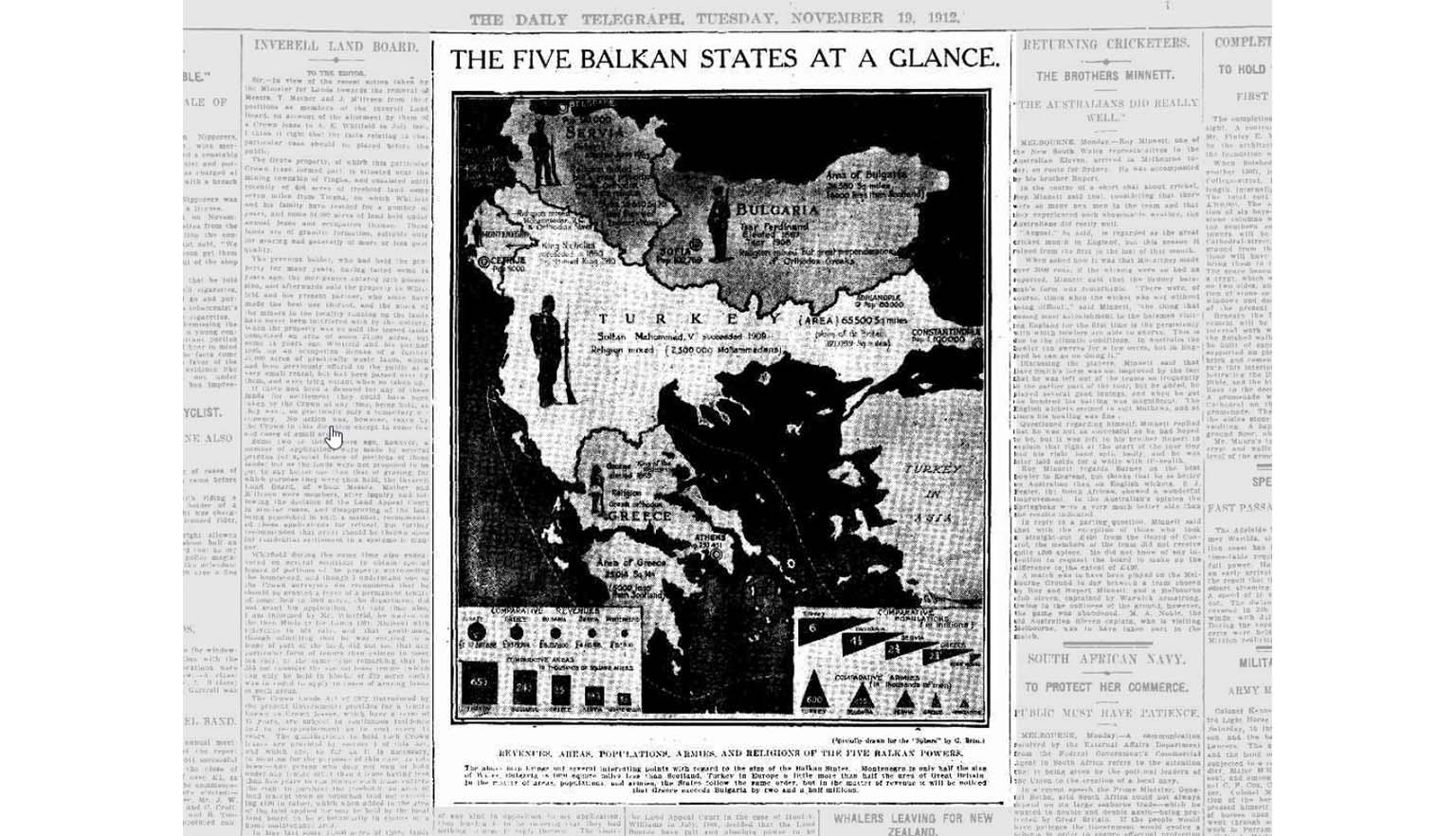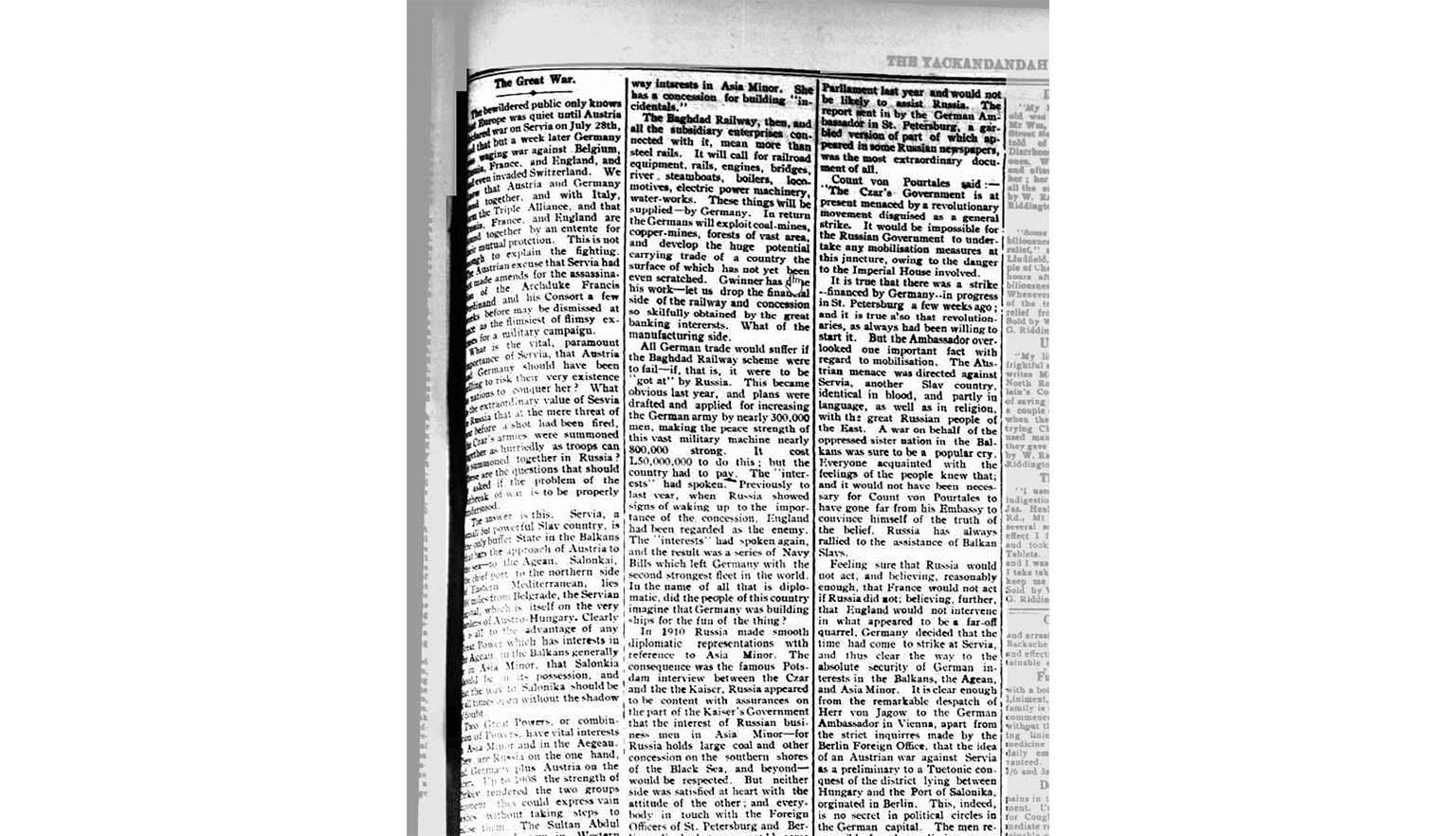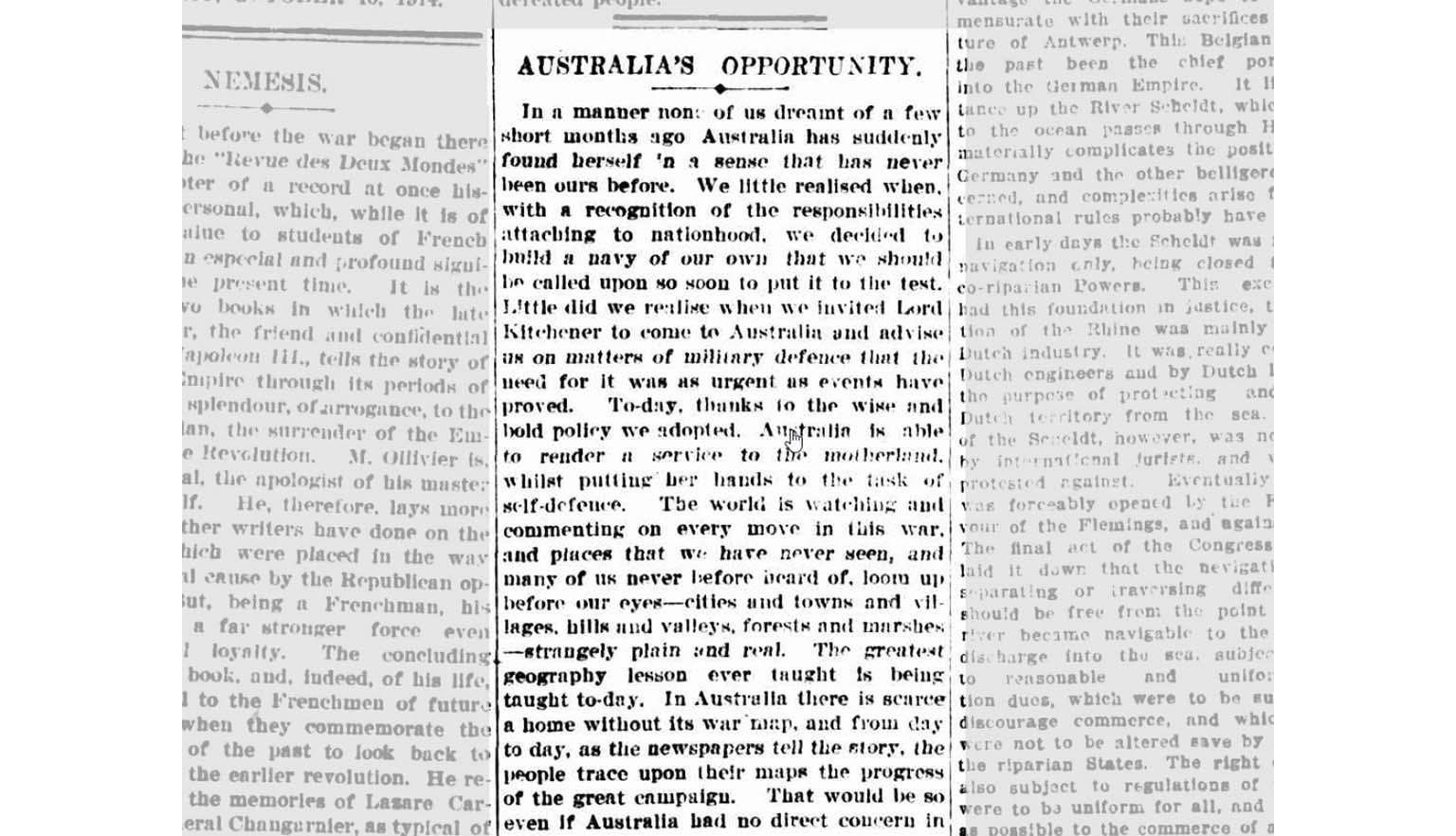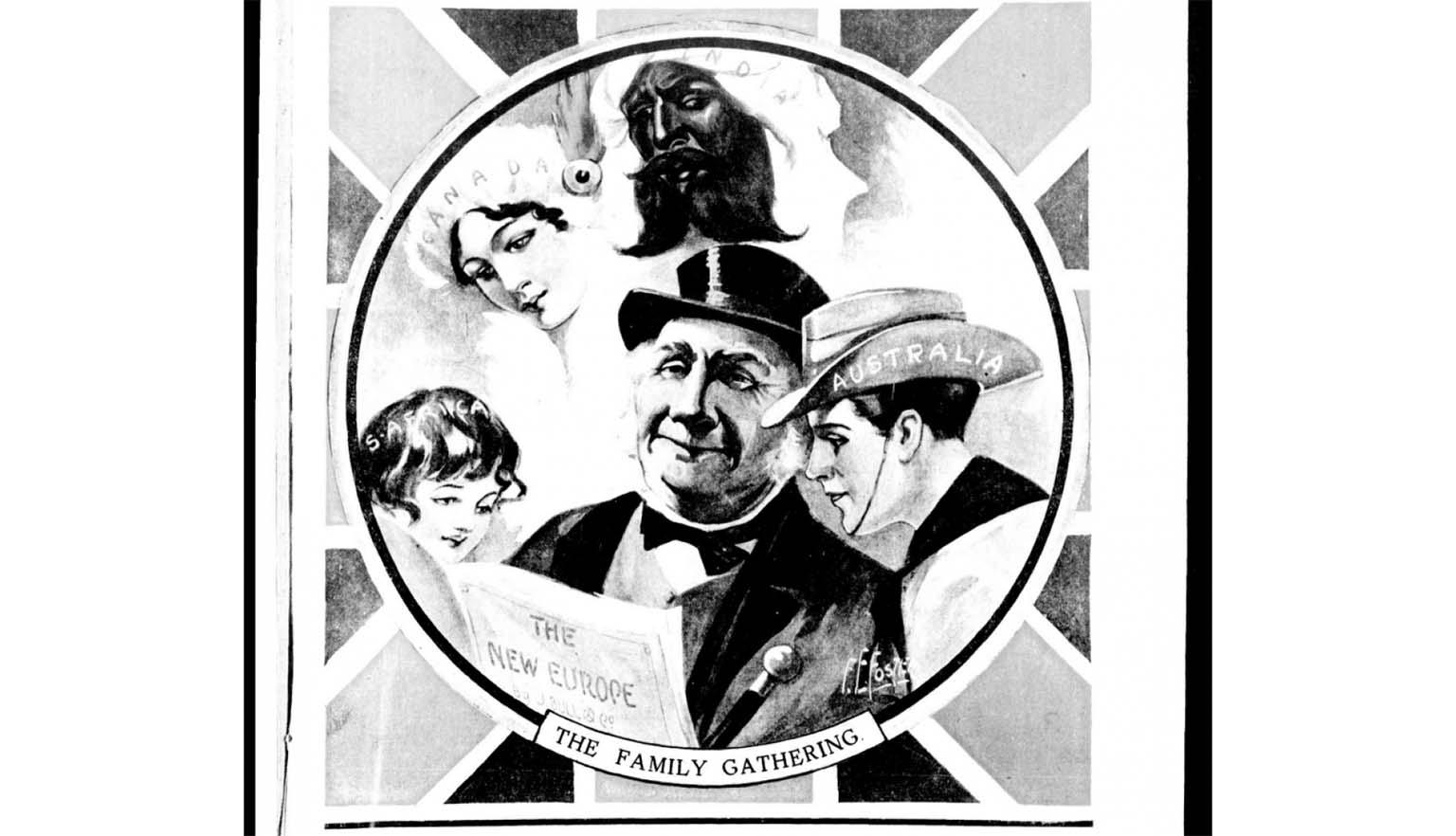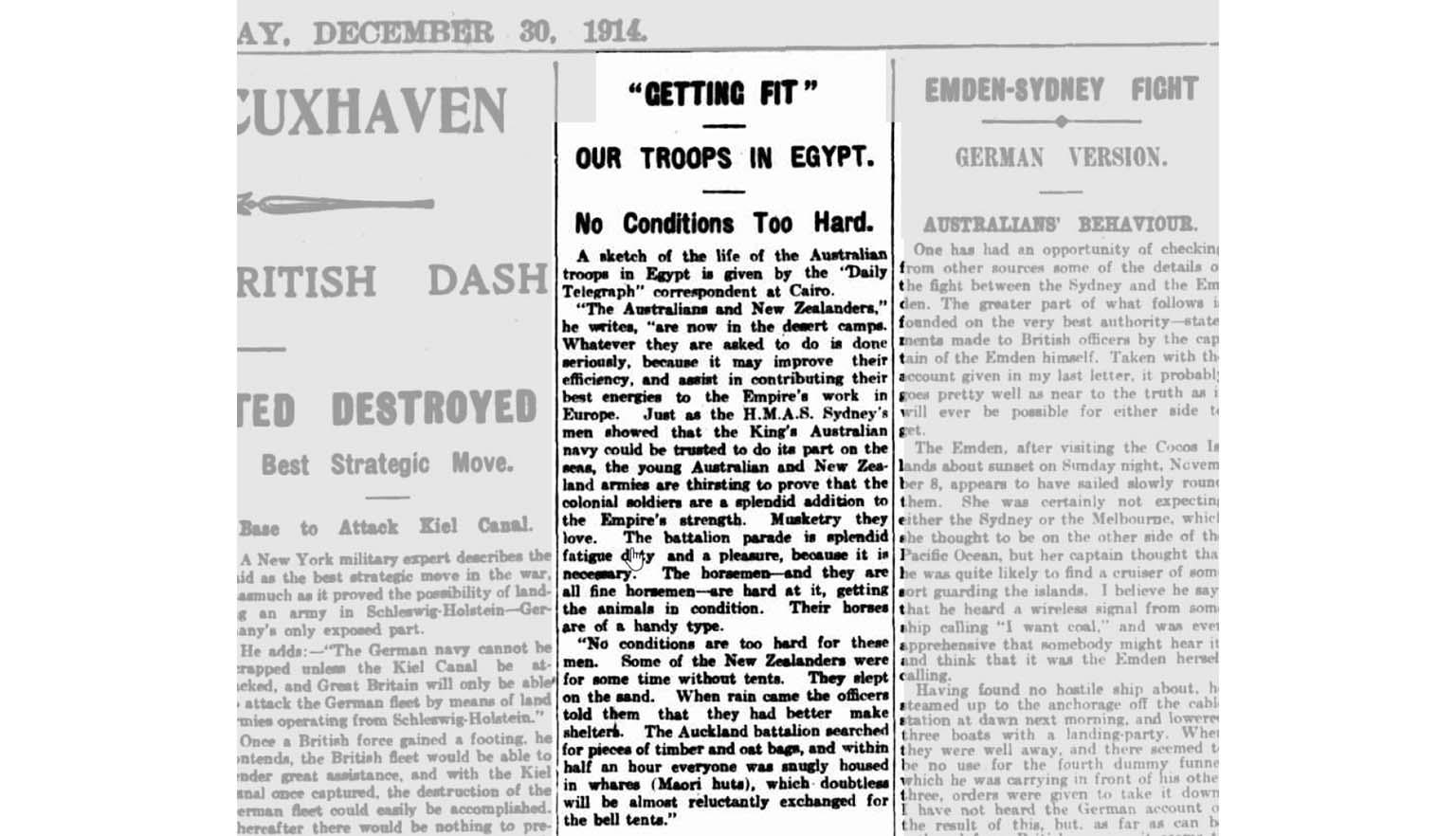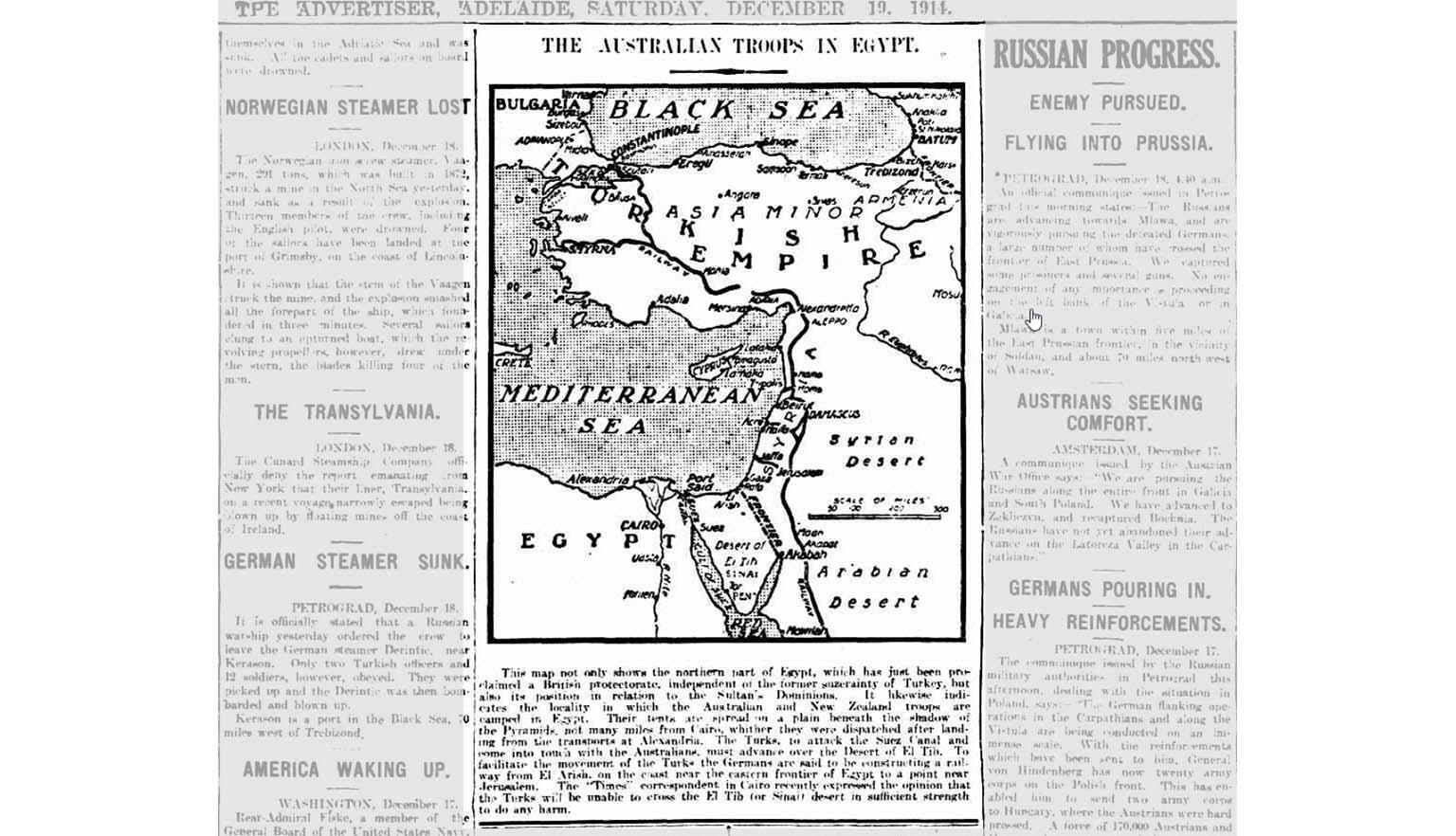World War 1: 1914
Pre-War
Tensions were building across the Balkans throughout the early 19th century.
Six great powers ruled Europe: Great Britain, France, Germany, Russia, Austria-Hungary and Serbia. Each sought to expand their territories.
Those observing the tensions anticipated, at some point, there would be another Balkan explosion, reflecting centuries of conflict between ‘the Turks and the Slavs and the Bulgars’. What followed was a complete reinvention of the European map within a few short years.
Outbreak of War (28 June 1914)
On 28 June 1914, Serbian nationalist Gavrilo Princip assassinated Archduke Franz Ferdinand, heir to the Austrian-Hungarian Empire, and his wife in Sarajevo, Bosnia. This event sparked a chain reaction that led to the outbreak of World War I less than a month later.
Austria-Hungary issued a list of ultimatums to Serbia. When Serbia failed to comply, Austria-Hungary declared war on 4 August 1914.
On 1 August, Germany declared war on Russia following Russian troop mobilisation along Austria-Hungary’s Galician border. Germany also launched its long-planned invasion of France through Belgium. Britain then declared war on Germany on 4 August. By then, the five major European powers were at war.
In total, 30 nations joined the fight. Australia, France, Japan and Russia formed part of the Allied powers. Germany, Austria-Hungary, Bulgaria and the Ottoman Empire became the Central powers.
Australia joins the fight (5 August 1914)
Australia entered World War I almost immediately after Britain declared war on Germany. A strong sense of patriotism and loyalty to Britain, often called the "Mother Country", drove support for involvement.
Both Prime Minister Joseph Cook and Opposition Leader Andrew Fisher pledged to send Australian troops. Many Australians saw Britain’s declaration as morally justified and vital for securing the Empire.
Aussie troops head to Egypt (November 1914)
The outbreak of war led to the formation of the Australian Imperial Force (AIF).
Thousands of young men enlisted, expecting to go straight to the Western Front. Instead, Australian and New Zealand Army Corps (ANZAC) troops disembarked in Alexandria, Egypt, in early December 1914.
Their mission was to protect British interests and defend the strategically critical Suez Canal. Under the shadow of the great pyramids, Australian soldiers trained in the hot desert for more than four months.
Significant battles
- Rabaul, New Guinea (11 September 1914)
